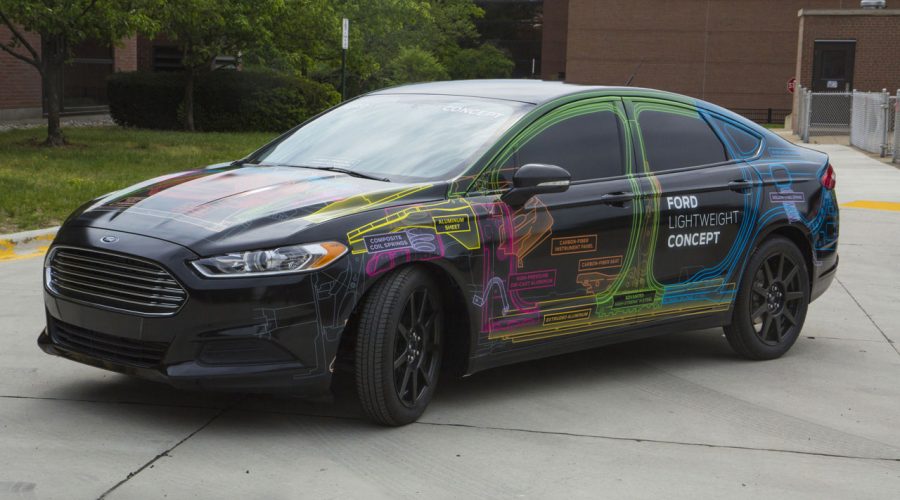In the push for more fuel-efficient cars and trucks, one of the key elements is keeping the weight down. It only makes sense – just
 |
think about how much more effort it takes to push a stalled car compared to, for instance, a baby stroller.
As part of its "Blueprint for Sustainability" Ford has become a full convert to the concept of reducing weight, a strategy the automotive industry has dubbed "lightweighting". The U.S. automaker has already cut over 318 kg (700 lbs) from the curb weight of its new 2015 F-150 by replacing the steel body with aluminum and by using lighter high-strength steel for much of the frame. This, Ford says, allows the new F-150 to "tow more, haul more, accelerate quicker and stop shorter – all with improved gas mileage."
Now, in cooperation with Cosma International – a subsidiary of Canadian parts supplier Magna
 |
International – Ford is turning its attention to weight-saving materials and technologies as they might be applied to passenger cars. As part of its initial efforts it has created a new Fusion-based Lightweight Concept that sheds a whopping 25-percent of its overall weight, jettisoning some 363 kg (800 pounds) compared to a regular midsize Fusion, and therefore tipping the scales at about the same weight as a subcompact Fiesta.
Key features of the Lightweight Concept include aluminum body panels, high-strength steel structural elements, aluminum subframes, chemically laminated lightweight windshield glass, narrow alloy wheels, and carbon fibre for interior components including the instrument panel and seat frames. With a lighter body, further weight reductions can be realized under the hood – the Lightweight Concept is easily
 |
powered by the same 1.0-litre three-cylinder Ecoboost engine as Ford’s Fiesta subcompact.
Ford intends to put the Lightweight Concept through extensive testing over the next couple of years to see how the various materials hold up. “Our goal was to investigate how to design and build a mixed-materials, lightweight vehicle that could potentially be produced in high volume, while providing the same level of safety, durability and toughness as our vehicles on the road today,” said Matt Zaluzec, Ford technical leader.
By using lighter materials, Ford aims to meet stringent upcoming fuel-efficiency standards while still providing the space and features that car buyers expect. “Consumers today want better fuel efficiency, but they also want more technology and features in the car, which usually adds weight to the vehicle,” said Raj Nair, Ford group vice president, Global Product Development. “A focus on light-weighting will be fundamental to our industry for years to come, and we are investigating many advanced materials applications as possible solutions for weight reduction in our vehicles.”
©(Copyright Canadian Auto Press)







